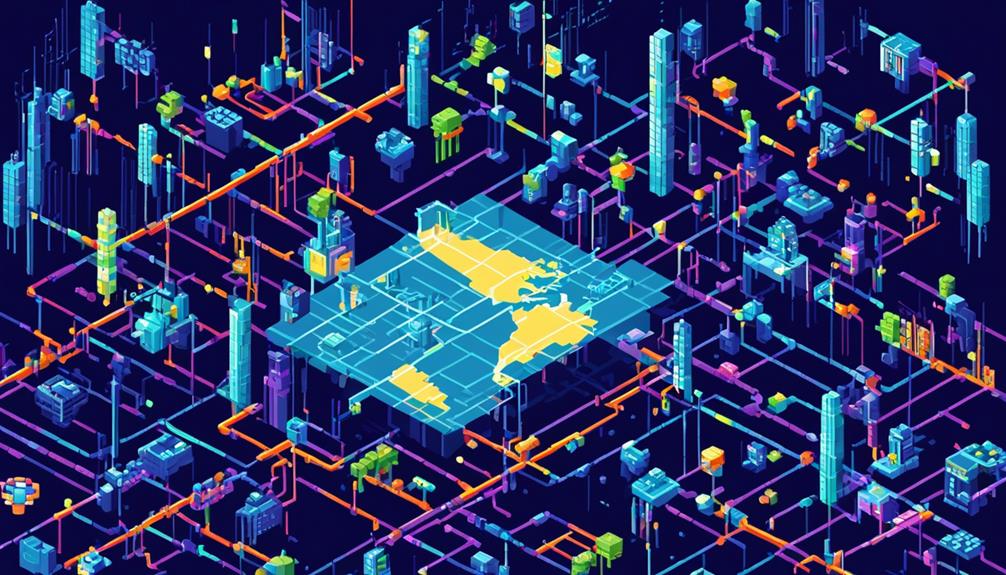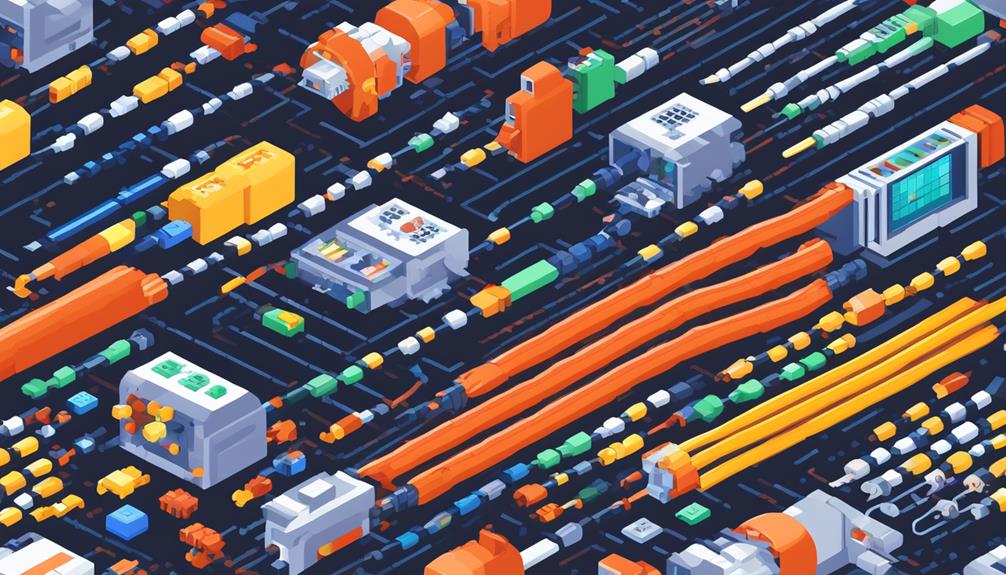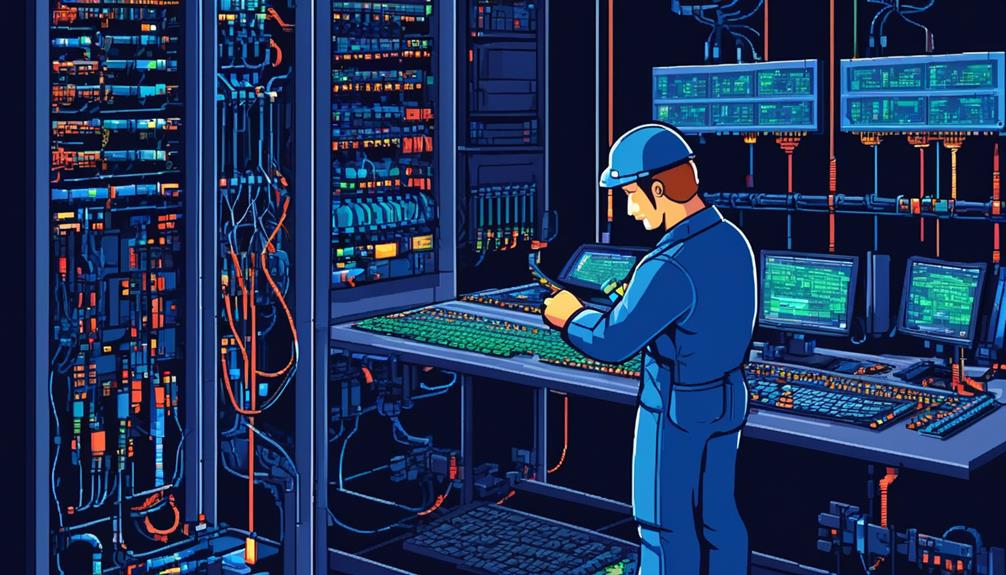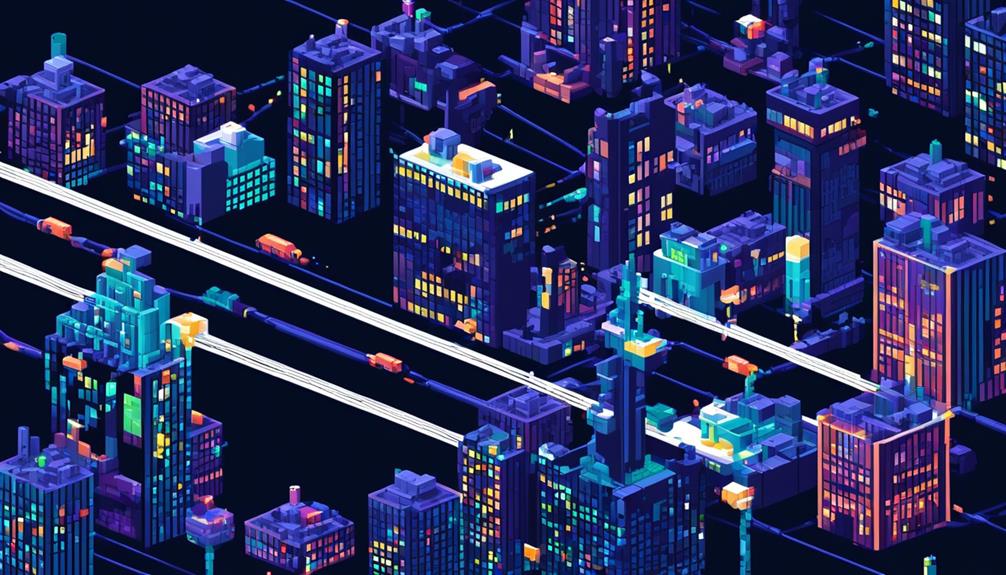Fiber optics in telecommunications has become the backbone of modern communication systems, revolutionizing the industry with its unparalleled capabilities. By utilizing glass or plastic fibers to transmit information as light pulses, this technology has replaced traditional copper wire, offering higher bandwidth, longer transmission distances, and immunity to electromagnetic interference.
The importance of fiber optics in telecommunications cannot be overstated, as it enables telecommunications companies to provide reliable and high-speed services for telephone, internet, and cable TV signals. Furthermore, fiber optic communication technology plays a crucial role in various other industries and applications.
In this discussion, we will explore the intricacies of fiber optic communication, the types and applications of fiber cables, the advantages it offers, the challenges faced in transmission, future trends, and its impact on telecommunication infrastructure. Join us as we delve into the fascinating world of fiber optics and its indispensable role in modern telecommunications.
Key Takeaways
- Fiber optics revolutionized the telecommunications industry by replacing copper wire.
- Fiber optics offer high bandwidth and immunity to electromagnetic interference.
- Fiber optics enable reliable and high-speed services for telephone, internet, and cable TV signals.
- Fiber optics provide unparalleled speed and low latency, supporting high-speed transmission and large bandwidth capacities.
Importance of Fiber Optics in Telecommunications

Fiber optics play a crucial role in modern telecommunications, revolutionizing the industry by replacing copper wire and offering high bandwidth and immunity to electromagnetic interference. Optical fibers are thin, flexible strands of glass or plastic that transmit data in the form of light pulses. These fibers are used in the construction of fiber optic cables, which are widely used in telecommunications networks.
The advantages of using fiber optics include high bandwidth and long-distance transmission capabilities. Unlike copper wires, which are limited in their ability to carry data over long distances, fiber optics can transmit signals over hundreds of kilometers without significant loss of quality. This makes fiber optic cables ideal for long-haul telecommunications applications.
Fiber optic cables consist of multiple individual fibers bundled together in a protective sheath. Each fiber is capable of transmitting thousands of individual channels of data simultaneously. This is achieved through the use of light signals, which can be modulated to carry different types of data, such as voice, video, and internet traffic.
In addition to their use in long-haul telecommunications networks, fiber optics are also used in various other industries. Medical applications include the use of fiber optic cables in endoscopes for minimally invasive surgeries. Defense and government organizations rely on fiber optics for secure communications. Industrial and commercial applications include data centers, where fiber optic cables are used to connect servers and storage devices.
Fiber Optic Communication Technology
Fiber optic communication technology offers significant advantages in terms of speed and bandwidth. It allows for faster and more efficient data transmission.
With the ability to transmit data at the speed of light, fiber optics provides unparalleled speed and low latency. This makes it ideal for applications that require real-time data transmission.
Additionally, fiber optics can support high bandwidth requirements. It enables the seamless transmission of large volumes of data, such as high-definition video and complex scientific calculations.
Speed and Bandwidth
Speed and bandwidth are critical factors in fiber optic communication technology. They determine the rate and capacity at which data can be transmitted. Fiber optic communication technology provides high-speed transmission and large bandwidth capacities. This makes it ideal for applications requiring rapid and efficient data transfer.
The transmission speed in fiber optic communication is close to the speed of light. This ensures quick and reliable data delivery. Moreover, the bandwidth of fiber optic communication systems can support high volumes of data. This makes them well-suited for internet, telecommunications, and multimedia services.
In comparison to traditional copper wire-based communication systems, fiber optics offer significantly higher speeds and broader bandwidth capabilities. This technology has distinct advantages over copper wire. It includes reduced signal loss and interference, enabling faster and more reliable data transmission.
Data Transmission Efficiency
Data transmission efficiency in fiber optic communication technology is achieved through the use of advanced techniques and technologies that ensure minimal signal loss and degradation over long distances.
Fiber optic cables are designed with a core and cladding that allows for the transmission of light signals. The core, which is made of a highly transparent material, guides the light signals, while the cladding, which has a lower refractive index, helps to contain the light within the core through a phenomenon known as total internal reflection. This allows the light signals to travel long distances without significant loss or degradation.
Single mode fibers, which have a smaller core and allow for the transmission of a single light signal, offer higher data transmission efficiency compared to multi-mode fibers, which can transmit multiple light signals simultaneously.
These advanced fiber optic technologies ensure reliable and efficient data transmission in telecommunications.
Fiber Cable Types and Applications

There are two primary types of fiber optic cables that are commonly used in telecommunications and networking applications: single-mode fiber and multimode fiber. These types of fiber cables are made of glass fiber and are designed to transmit data using light signals.
Single-mode fiber is used for longer distances due to its smaller diameter and higher bandwidth. It uses a laser as the light source, which allows for a more focused and concentrated beam of light. This enables single-mode fiber to transmit data over longer distances with minimal loss of signal quality. Single-mode fiber is often used by telecommunications service providers to provide high-speed internet connections to homes and businesses.
On the other hand, multimode fiber is used for shorter distances and allows multiple light pulses to be sent simultaneously. It uses an LED (Light Emitting Diode) as the light source, which emits a wider beam of light compared to a laser. This wider beam allows for the transmission of multiple light pulses, which increases the overall capacity and bandwidth of the cable. Multimode fiber is commonly used for local area networks (LANs) and short-distance telecommunications applications.
The choice between single-mode and multimode fiber depends on the specific application and the distance over which the data needs to be transmitted. Single-mode fiber is ideal for long-distance telecommunications applications, while multimode fiber is more suitable for shorter distances and high-capacity data transmission.
Advantages of Fiber Optic Telecommunications
With its ability to offer high bandwidth, long-distance transmission capabilities, and immunity to electromagnetic interference, fiber optic telecommunications provides numerous advantages over traditional copper wire systems. Here are some of the key advantages of fiber optic technology in telecommunications:
- High Bandwidth: Fiber optics can transmit large amounts of data at high speeds. The high bandwidth of fiber optic cables allows for faster internet access, seamless video streaming, and efficient data transmission.
- Long-Distance Transmission: Fiber optic cables can carry signals over long distances without significant signal loss. Unlike copper wire, which experiences signal degradation over long distances, fiber optics can transmit data over hundreds of kilometers without the need for signal boosters.
- Immunity to Electromagnetic Interference: Fiber optic cables are immune to electromagnetic interference, which can degrade the quality of signals in copper wire systems. This makes fiber optics a reliable transmission medium, especially in environments with high electromagnetic activity.
- Speed of Light: As light is used to transmit information in fiber optic cables, the speed of data transmission is close to the speed of light. This results in minimal latency and faster communication compared to copper wire systems.
These advantages make fiber optic telecommunications the preferred choice for various applications, including telephone, internet, cable TV, and medical, defense, government, industrial, and commercial applications.
While fiber-optic systems may require initial investment and infrastructure development, the prices for fiber-optic communications have significantly dropped since 2000. Researchers continue to push the boundaries of fiber optic technology, achieving record-breaking bandwidth-distance products.
With its superior performance and reliability, fiber optics is undoubtedly revolutionizing the telecommunications industry.
Challenges and Solutions in Fiber Optic Transmission

One of the primary challenges in fiber optic transmission lies in the complex and costly process of infrastructure development and installation. Fiber optic systems require a network of optic cables to be installed, which can be a labor-intensive and time-consuming task. Moreover, the cost of deploying fiber optic cables over long distances can be substantial, especially when considering the need for trenching and the installation of repeaters to boost the signal strength.
To address these challenges, advancements in technology have been made to reduce costs and improve installation efficiency. For instance, the development of high-density fiber optic cables has allowed for more fibers to be bundled together, increasing the amount of data that can be transmitted simultaneously. Additionally, advancements in installation techniques, such as micro-trenching and directional drilling, have minimized the disruption caused by infrastructure development.
Another challenge in fiber optic transmission is the need for high bandwidth to support the growing demand for internet and data transmission. As more users rely on fiber optics for high-speed internet access, the existing infrastructure may struggle to meet the increasing bandwidth requirements. To overcome this challenge, research and development efforts have focused on improving the capacity of fiber optic systems through techniques like wavelength division multiplexing, which allows multiple signals to be transmitted simultaneously over different wavelengths.
In conclusion, while fiber optic transmission offers numerous advantages such as high-speed data transmission and long-distance capabilities, it also presents challenges related to infrastructure development, installation complexity, and bandwidth requirements. However, through technological advancements and innovative solutions, the telecommunications industry continues to overcome these challenges and expand the reach of fiber optic networks.
| Challenges | Solutions |
|---|---|
| Complex and costly infrastructure development and installation | Advancements in technology to reduce costs and improve installation efficiency |
| High bandwidth requirements | Development of high-density fiber optic cables and wavelength division multiplexing techniques |
Future Trends in Fiber Optics for Telecommunications
The future of fiber optics in telecommunications is characterized by advancements in higher bandwidth capacities and the integration of emerging technologies to enhance high-speed data transmission capabilities.
As the demand for faster and more reliable internet services continues to grow, the following trends are shaping the future of fiber optics:
- Advancement of higher bandwidth capacities: With the exponential growth of data consumption, there is a need for fiber optic cables that can support higher bandwidths. This will enable the transmission of large amounts of data at faster speeds, meeting the requirements of bandwidth-intensive applications such as video streaming, online gaming, and cloud computing.
- Improved reliability and durability: To meet the expanding needs of businesses and consumers, there is a focus on enhancing the reliability and durability of fiber optic cables. This includes developing cables that are more resistant to physical damage, environmental factors, and signal degradation, ensuring consistent and uninterrupted data transmission.
- Integration with emerging technologies: The integration of fiber optics with emerging technologies such as 5G networks will further enhance high-speed data transmission capabilities. This integration will enable faster and more efficient communication between devices, supporting the growing demand for connected devices and the Internet of Things (IoT).
- Exploration of alternative materials: Research and development efforts are exploring alternative fiber-optic materials to overcome performance limitations and enhance optical properties. These alternative materials have the potential to improve the efficiency and reliability of fiber optic transmission, further advancing the capabilities of fiber optics in telecommunications.
Impact of Fiber Optics on Telecommunication Infrastructure

The impact of fiber optics on telecommunication infrastructure has been significant. It has brought about enhanced data transmission, greater bandwidth capacity, and improved network reliability. Fiber optics has revolutionized the telecommunications industry due to its ability to carry more information than copper wire and its immunity to electromagnetic interference.
The increased bandwidth and faster speeds offered by fiber optics have allowed for the seamless transmission of large amounts of data. This has enabled the development of advanced technologies and services.
Enhanced Data Transmission
Enhanced data transmission in telecommunication infrastructure is revolutionized by the impact of fiber optics, providing high-speed and reliable communication capabilities.
The use of fiber optics in telecommunications has significantly improved data transmission by offering higher bandwidth and immunity to electromagnetic interference. Optic cables, typically made of glass, are commonly used to transmit data over long distances without distortion or weakening.
There are two main types of fiber optic cables: single-mode and multi-mode. Single-mode fiber is used for long-distance transmission, while multi-mode fiber is suitable for shorter distances.
A fiber cable consists of a core, where the data is transmitted, and a layer called cladding, which helps to contain the light within the core. This structure ensures efficient transmission and low signal loss.
Greater Bandwidth Capacity
With the implementation of fiber optics, the telecommunication infrastructure has witnessed a remarkable increase in bandwidth capacity, enabling the transmission of larger volumes of data at unprecedented speeds.
Fiber technology has largely replaced DSL, offering significant advantages over electrical transmission. Fiber optic cables use laser light to transmit data through a light beam, taking advantage of the high refractive index of the core and cladding materials. These cables can carry light pulses that represent data at speeds of up to several terabits per second.
Unlike electrical signals, which degrade over long distances, light signals travel great distances without significant loss. Fiber optics also allows for the use of optical amplifiers, which boost the signal strength without converting the light pulses into electrical signals.
However, nonlinear effects can limit the bandwidth capacity of existing fiber infrastructure, requiring ongoing research and development in the telecommunications industry.
Improved Network Reliability
Has the implementation of fiber optics in telecommunication infrastructure resulted in a significant improvement in network reliability?
The use of fiber optics has indeed led to a considerable enhancement in network reliability.
- Fiber optics utilize light beams instead of electrical signals, which are less susceptible to electromagnetic interference, ensuring higher resistance and reducing the risk of network downtime and outages.
- Signals are sent through fiber cables that are commonly wrapped around multiple light beams, allowing for increased capacity and minimizing signal loss and attenuation.
- Single mode fiber, commonly used in telecommunications, allows signals to travel longer distances without degradation, contributing to improved signal integrity and network performance.
- The robust nature of fiber optic cables makes them more durable and resilient to environmental factors and external disturbances, further enhancing network reliability.
These advancements in fiber optic technology not only improve network reliability but also help reduce costs and provide more stable network connections for businesses and consumers.
Frequently Asked Questions
How Is Fiber Optics Used in Telecommunications?
Fiber optics play a crucial role in telecommunications, offering several advantages over traditional copper wires. They enable high-speed internet and data transmission, resulting in improved connectivity and increased bandwidth. Fiber optic cables are the key components of telecommunications systems, providing reliable and efficient transmission of signals.
The impact of fiber optics on the telecommunication industry has been significant, revolutionizing communication networks. However, implementing fiber optics poses challenges, including complex installation and operation, especially in urban areas and long-distance applications.
Future developments in fiber optic telecommunications aim to further enhance connectivity and address these challenges.
What Is Fiber Optics in Networking?
Fiber optics in networking is the use of fiber optic cables to transmit data and information. Compared to copper cables, fiber optics offer numerous advantages such as higher bandwidth, faster transmission speeds, and immunity to electromagnetic interference.
The installation process involves creating the optical signal, relaying it along the fiber, receiving the signal, and converting it into an electrical signal. Fiber optics play a crucial role in providing high-speed internet and are widely used in telecommunications infrastructure.
Future trends include advancements in transmission technology and considerations for network security.
Which Fibre Is Used for Telecommunication?
Fiber optic cables are extensively used in telecommunication infrastructure for the transmission of optical signals. These cables provide high bandwidth capacity, allowing for efficient data transmission over long distances.
To minimize signal loss, fiber optic splicing and connectors are employed to ensure seamless connectivity.
Additionally, fiber optic amplifiers are used to boost signals in long-haul transmission.
Designing a fiber optic network involves careful consideration of factors such as distance, capacity, and connectivity requirements.
What Is Optics in Telecommunication?
Optics in telecommunications plays a crucial role in data transmission.
Optical communication systems rely on the use of light pulses to transmit information over long distances. The advantages of fiber optics in this context include high bandwidth, long-distance transmission capabilities, and immunity to electromagnetic interference.
Optical networks, supported by optical signal processing and optical fiber technology, form the backbone of modern telecommunication infrastructure.
Additionally, optics also plays a significant role in wireless communication, and the future prospects of optical communication look promising.
